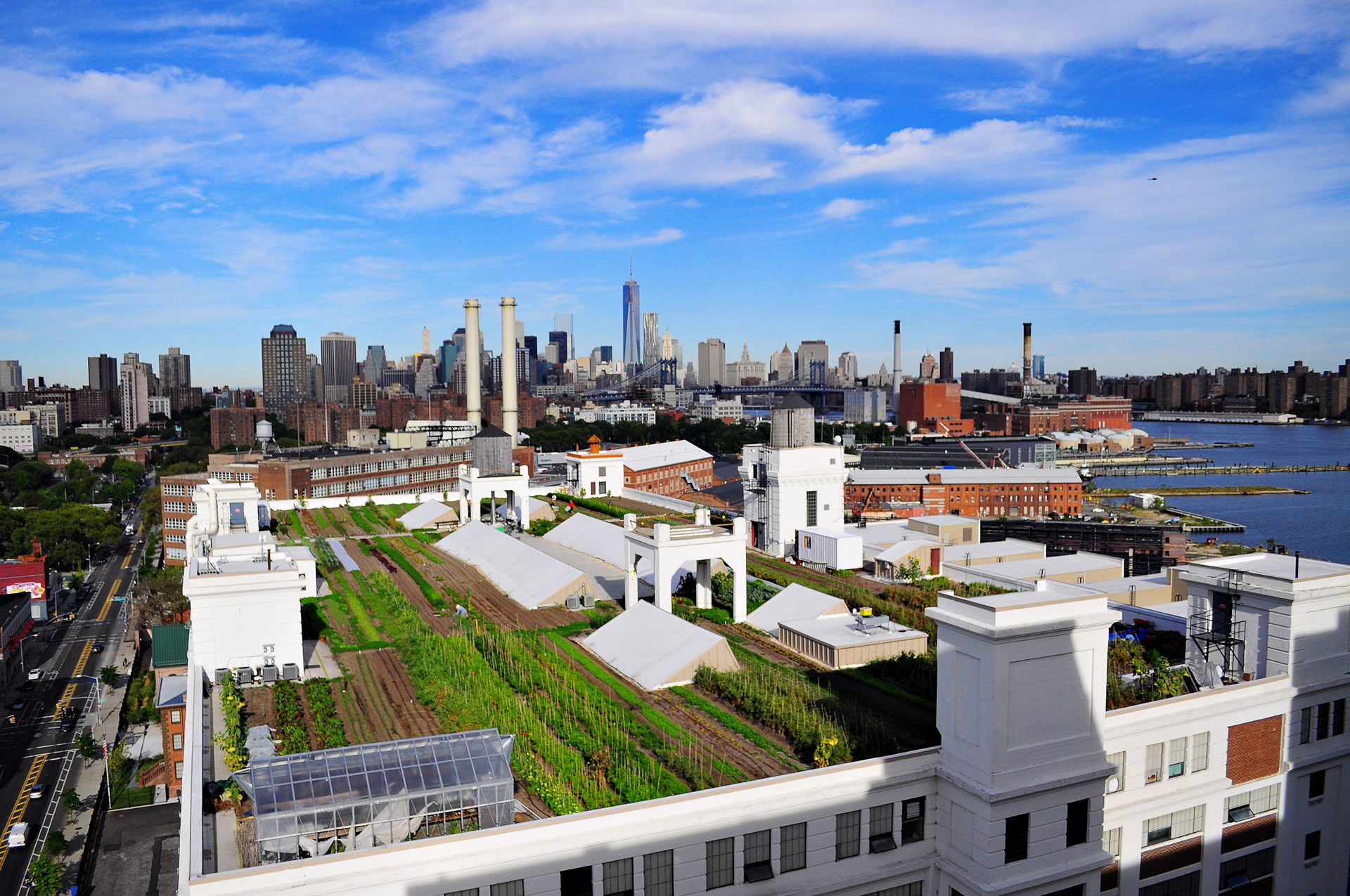Once the perfect picture of American military force and ingenuity, New York’s Brooklyn Navy Yard has seen waves of change since being established in 1801, few more significant than its current redevelopment, which aims to position the modern industrial park as the national poster child for sustainability and job creation.
Brooklyn
Navy Yard 1801–1940sThe Brooklyn Navy Yard is established as one of the country’s first five naval shipyards. Over the next 200 years, some of America’s most important ships are built in Brooklyn.—1940s–1966WWII brings sweeping change to the Yard, when the government annexes adjacent land, creating the world’s largest dry docks and increasing its workforce to over 70,000. It thrives until 1966, when multiple facilities are closed.—1969–2000
The Yard reopens as an industrial park, and though growth over the next couple decades is slow, by 1998, the yard is 98-percent occupied and home to over 200 small businesses.
—
2001–Present
The city launches its largest expansion since WWII. A movie studio facility arrives in 2005, and green initiatives begin to take a foothold in 2009. Two million square feet of new ground is currently under construction.
More than 12 new buildings are currently in various phases of design and construction in the historic mixed-use development, with current projects specifically targeting three goals: to add 2,500 jobs over the next three years, to ensure that all buildings on-site meet LEED Silver certification or higher, and to do these things while preserving the history of the Yard as an industrial powerhouse of the city and country.
“This is a multigenerational development,” says David Ehrenberg, president and CEO of the Brooklyn Navy Yard Development Corporation (BNYDC), the nonprofit that manages the Yard for the City of New York. “Between the buildings and infrastructure, it is the largest expansion at the Yard since WWII. By many orders of magnitude, it’s simply enormous.”
The current initiatives represent no small task for the BNYDC, considering the park spans more than four million square feet of existing infrastructure. Many of the buildings haven’t seen attention or investment since the Yard’s last major expansion in the 1940s and ’50s, posing a physical challenge for sustainable updates. “[Many of the buildings were] built by the Navy for the Navy’s particular needs,” Ehrenberg says. “Working with things like load-bearing capacities on the roof to put agriculture or solar panels up there is certainly more challenging than with modern buildings.”
Most of the green elements woven throughout the development—such as local sourcing, green roof installations, water-conservation efforts, and energy-efficient lighting systems—contribute toward LEED status. Some buildings have already reached the system-wide goal of LEED Silver certification: The New York Police Department’s Perry Avenue Building reached Gold, and Building 92 reached Platinum.
Official certification is only part of the Yard’s coordinated green efforts. Many initiatives have been implemented simply to be “as good of a neighbor as possible” to the surrounding Brooklyn community, according to Ehrenberg. “Most of it is not glamorous work, but it’s basic, simple things that we can do to ensure that we’re at the cutting edge of how you embrace industry,” he says, “and creating the jobs that come along with that.” As part of a major water-quality and -conservation project, for instance, the nearby New York Harbor School planted a large oyster colony in one of the adjacent waterways to see how the bivalves might help clean sewage from water entering the system from the Yard. One building houses one of the largest rooftop gardens in New York City (other rooftops are being evaluated for solar power systems), and large wind turbines help generate on-site electricity.
When it comes to modernizing buildings and implementing new features, Ehrenberg says the new updates must walk a fine line between sustainability and preservation; the Brooklyn Navy Yard was recently placed on the National Register of Historic Places. “The buildings have great bones, high ceilings, wonderful historic touches,” Ehrenberg says. “We take trying to preserve that very seriously.”

Though all buildings at the Navy Yard must be certified
LEED Silver, Building 92 reached Platinum status.
Apart from the physical challenges of growth and modernization, encouraging a system-wide culture of sustainability has been a relatively easy process within the network of existing tenants, Ehrenberg says. Duggal Eco-Solutions, for example, is already a big proponent of sustainability and has helped implement initiatives in conjunction with the BDYNC, including a system of street lamps that are powered by a combination of solar and wind energy, eliminating the need for electricity. “Most of the Yard’s street lights are entirely off the grid,” he says. “It’s both a sustainability and resiliency measure because during times like [Hurricane] Sandy, those lights can’t go out.”
The green initiatives help attract new business—and, subsequently, new jobs—which is a main future priority for BYNDC. “[Sustainability is] something more general tenants are expecting and demanding, especially ours who are in the manufacturing world,” Ehrenberg says. “Being a part of sustainable efforts is core to their business.” In addition to attracting companies like Brooklyn Grange, New Lab, or Situ Fabrication, over the past several years the organization has placed nearly 600 local residents in jobs at the Yard, a number that continues to grow.
As new projects come online—including a 260,000-square-foot manufacturing building, the Admirals Row mixed-use development, and the adaptive reuse of Building 77—Ehrenberg says the future will continue to bring more viable jobs to the Yard. “It’s about producing more jobs and bringing more buildings online in a way that is sensitive to the history, the environment, and the community immediately surrounding the Yard,” he says. “It’s an ongoing project with a huge amount of additional potential to create jobs in a sensitive way.”

